49.
What then was the basic meaning of maitaki with 3 'eyes'
in contrast to maitaki with 2 mata? I
guess winter solstice in contrast to spring equinox:

... Ebony label EA 32650 from Den's tomb. The
upper right register depicts king Den twice: at the left
he is sitting in his Hebsed pavilion, at the right he is
running a symbolic race around D-shaped markings. This
ceremony is connected to the so-called 'race of the Apis
bull'. The middle right section reports about the raid
of the city 'beautiful door' and about a daughter of Den
suffering from an unknown disease. The lower right
section reports about the visitation of the 'souls of
Peh' at the royal domain 'Wenet'. The left part of the
label describes the content of the vessel that once
belonged to the label and mentions the high official
Hemaka, who was obviously responsible for the
delivery of the labeled jar ...
... Ebony is a dense black wood, most commonly
yielded by several different species in the genus
Diospyros. Ebony is dense enough to sink in
water ...
 |
 |
 |
 |
 |
|
Ca5-12 |
Ca5-13 (118) |
Ca5-14 |
Ca5-15 |
Ca5-16 (121) |
|
te maitaki |
te henua |
kua haga te mea ke |
manu puoko i tona ahi |
kua heu te huki |
|
January 15
'December 19
NOVEMBER 12 |
16
20
13 |
17
SOLSTICE
14 |
18
22
15 |
19
(384)
23
(357)
16
(320) |
|
ALTAIR (*300) |
φ Aquilae |
|
τ Aquilae |
|
|
July
16
'June 19
MAY
13 |
17
20
14 |
18
SOLSTICE
(500
= 135 + 365) |
19
(200)
22
(173)
16
(136) |
20
23
17 |
|
AZMIDISKE
(ξ) |
φ Gemini (*118) |
DRUS
(χ) |
ω
Cancri |
NAOS
(ζ) |
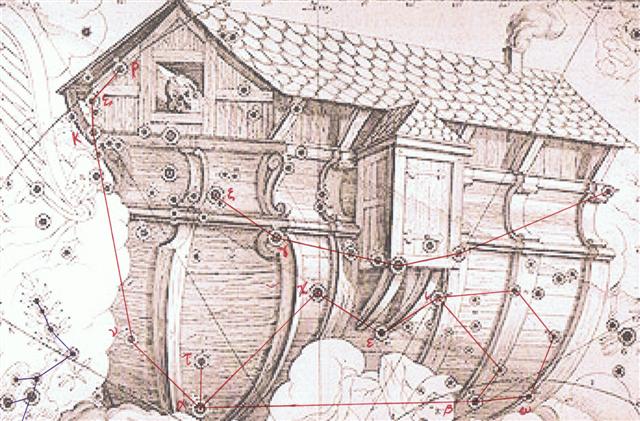

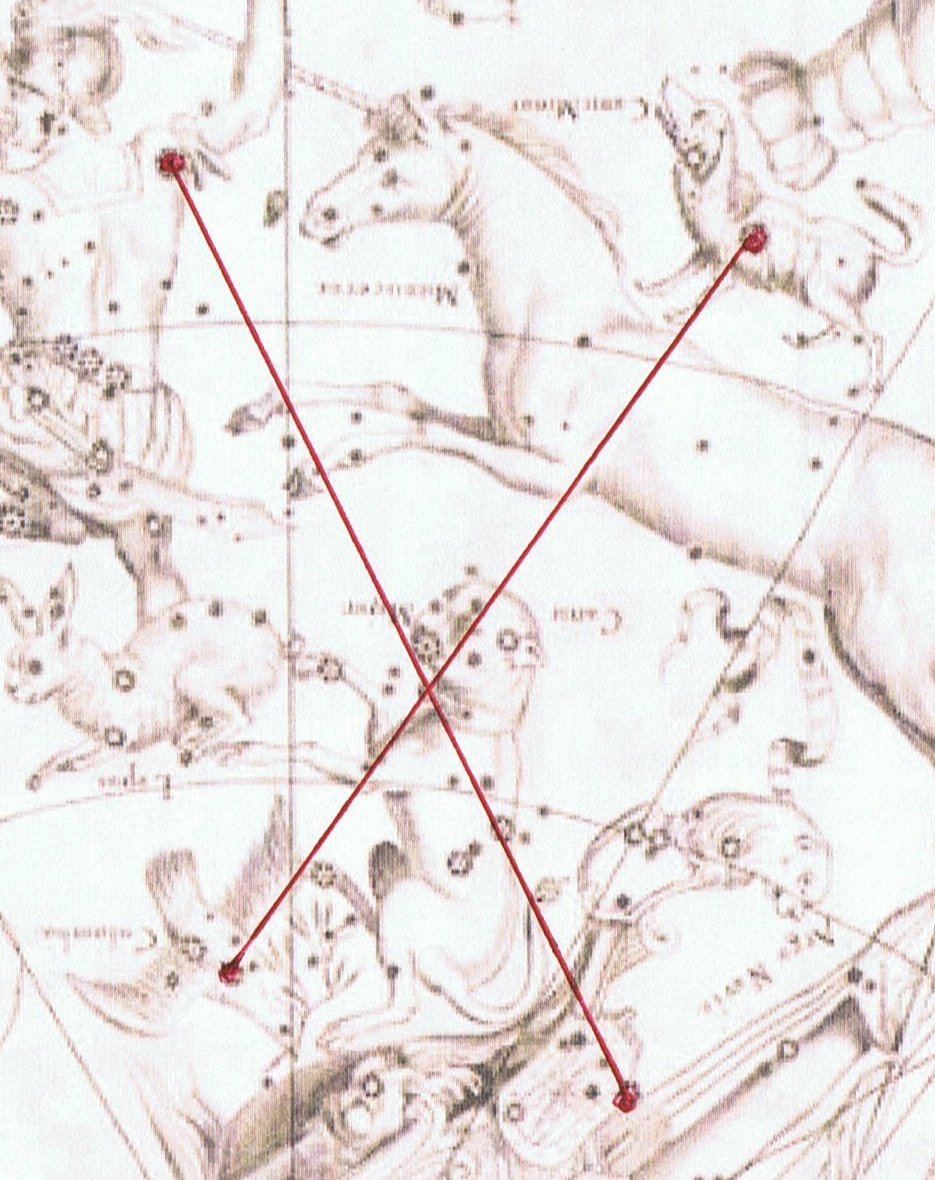
 |
 |
 |
 |
|
Ca5-17 |
Ca5-18 |
Ca5-19 |
Ca5-20 (125) |
|
hakahagana te honu |
tagata moe hakarava hia |
ka moe |
hakapekaga mai |
|
CHRISTMAS EVE |
'December 25 |
26
(360 = 12 * 30) |
27 |
|
*305 |
*306 |
GREDI
(α Capricorni) |
*308 |
|
ST
JOHN'S DAY |
'June 25 |
26
(177 = 6 * 29½) |
27 |
|
HEAP OF FUEL
(μ) |
TEGMINE
(ζ) |
AL
TARF (The End) |
BRIGHT FIRE
(λ Cancri) |
|
Peka
1. 100,000 T. 2. A cross;
pekapeka, curly; pekapekavae, instep
T. (? shoelaces.); hakapeka, to cross;
hakapekapeka, to interlace, lattice. T Mgv.:
peka, a cross, athwart, across; pepeka,
thick, only said of a number of shoots or
sprouts in a close bunch. Mq.: peka, a
cross, dense thicket. Ta.: pea, a cross.
Churchill.
Mq.: Pekahi, to make
signs with the hand, to blow the fire with a
fan. Ha.: peahi, id. Churchill.
Pekapeka, starfish.
Vanaga. |
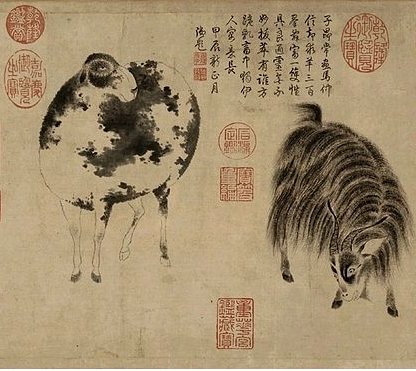

|
Egyptian
menchet |
 |
Phoenician
lamedh |
 |
Greek
lambda |
Λ (λ) |
|
... Wikipedia
has no information regarding the origin of
the Phoenician lamedh, but the
Egyptian 'cloth' hieroglyph (menchet)
is - I suggest - related to the 4 upside
down sky pillars. I.e. the basic element of
the 'covering' hieroglyph could have
indicated darkness:

 |
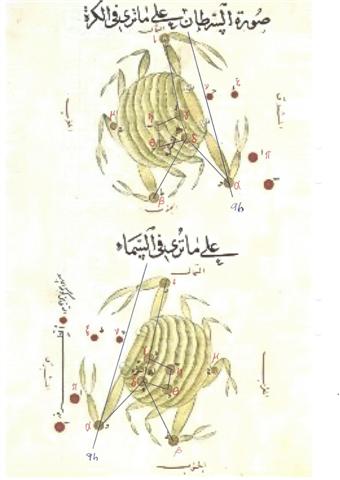
... The
seventh tree is the oak, the tree of Zeus, Juppiter,
Hercules, The Dagda (the chief of the elder Irish
gods), Thor, and all the other Thundergods, Jehovah
in so far as he was 'El', and Allah. The royalty of
the oak-tree needs no enlarging upon: most people
are familiar with the argument of Sir James Frazer's
Golden Bough, which concerns the human
sacrifice of the oak-king of Nemi on Midsummer Day.
The fuel of the midsummer fires is always oak, the
fire of Vesta at Rome was fed with oak, and the
need-fire is always kindled in an oak-log.
When Gwion writes in the Câd Goddeu, 'Stout
Guardian of the door, His name in every tongue', he
is saying that doors are customarily made of oak as
the strongest and toughest wood and that 'Duir', the
Beth-Luis-Nion name for 'Oak', means 'door' in many
European languages including Old Goidelic dorus,
Latin foris, Greek thura, and German
tür, all derived from the Sanskrit Dwr,
and that Daleth, the Hebrew letter D, means
'Door' - the 'l' being originally an 'r'.
Midsummer is the flowering season of the oak, which
is the tree of endurance and triumph, and like the
ash is said to 'court the lightning flash'. Its
roots are believed to extend as deep underground as
its branches rise in the air - Virgil mentions this
- which makes it emblematic of a god whose law runs
both in Heaven and in the Underworld ... The month,
which takes its name from Juppiter the oak-god,
begins on June 10th and ends of July 7th. Midway
comes St. John's Day, June 24th, the day on which
the oak-king was sacrificially burned alive. The
Celtic year was divided into two halves with the
second half beginning in July, apparently after a
seven-day wake, or funeral feast, in the oak-king's
honour
...

... In Plato's Timaeus, it is
explained that the two bands that form the soul of
the world cross each other like the letter Χ ...
Tav is the last letter of the Hebrew word
emet, which means truth. The midrash explains
that emet is made up of the first, middle,
and last letters of the Hebrew alphabet (Aleph,
Mem, and Tav...).
Sheqer (falsehood), on the other hand, is
made up of the 19th, 20th, and 21st (and
penultimate) letters.
Thus, truth is
all-encompassing, while falsehood is narrow and
deceiving. In Jewish mythology it was the word
emet that was carved into the head of the
Golem which ultimately gave it life. But when
the letter 'aleph' was erased from the Golem's
forehead, what was left was 'met' - dead. And
so the Golem died ...

... And half a year later, at Christmas
Eve, Canopus would be at the Full Moon.
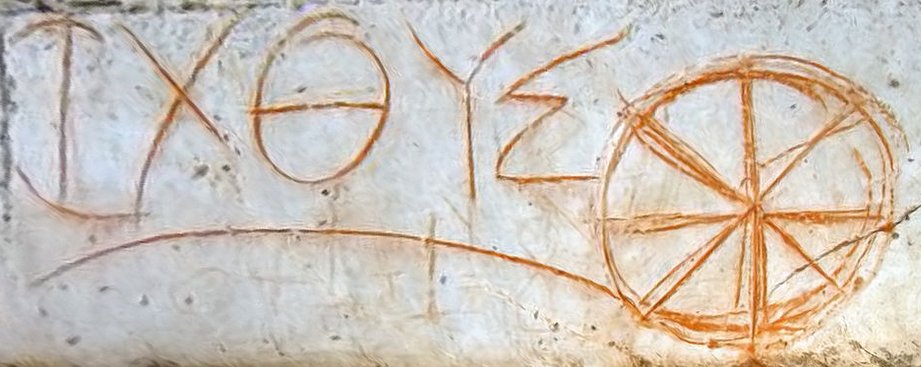
|
APRIL 17 (107) |
18 |
19 |
20 (*30) |
21 |
 |
 |
 |
 |
 |
|
Ga1-27 |
Ga1-28 |
Ga1-29 |
Ga1-30 |
Ga2-1 |
|
6h (91.3)
ν Orionis (91.4), θ Columbae (91.5), π
Columbae (91.6) |
ξ Orionis
(92.5) |
Al Han'ah-4 /
Maru-sha-pu-u-mash-mashu-7
(Front of the Mouth of the Twins)
TEJAT PRIOR = η Gemini
(93.4), γ Monocerotis (93.5), κ Aurigae
(93.6), κ Columbae (93.8) |
FURUD
= ζ Canis Majoris
(94.9) |
Well-22 /
Arkū-sha-pu-u-mash-mashu-8 (Back of the
Mouth of the Twins)
δ Columbae (95.2),
TEJAT POSTERIOR = μ Gemini, MIRZAM = β Canis
Majoris
(95.4),
CANOPUS
= α Carinae
(95.6), ε Monocerotis (95.7), ψ1 Aurigae
(95.9) |
|
June 20 |
SOLSTICE |
22 (*93) |
23 (174) |
ST JOHN'S DAY |
|
°June 16 |
17 (168) |
18 |
19 |
20 (*91) |
|
'May 24 (144) |
25 |
26 |
27 |
28 (*68) |
|
"May 10 (130) |
11 |
12 |
13 |
14 (*54) |
|
NAKSHATRA DATES: |
|
OCTOBER 17 (290) |
18 |
19 |
20 |
21 (*214) |
|
ZHŌNGSHĀN = ο Herculis
(274.0),
π Pavonis (274.6) |
ι Pavonis
(275.1),
POLIS
= μ Sagittarii
(275.9)
MENKAR (α Ceti)
|
η Sagittarii
(276.9) |
Purva Ashadha-20 |
|
KAUS MEDIUS = δ Sagittarii,
κ Lyrae (277.5),
TUNG HAE (Heavenly Eastern Sea) = η
Serpentis
(277.7),
SHAOU PIH (Minor Minister) = φ Draconis
(277.8),
KWEI SHE = χ Draconis
(277.9) |
φ Oct. (278.1),
KAUS AUSTRALIS = ε Sagittarii
(278.3), ξ
Pavonis (278.4),
AL ATHFAR = μ Lyrae
(278.6) |
|
December 20 |
SOLSTICE |
22 |
23 (357) |
CHRISTMAS EVE |
|
°December 16 |
17 |
18 |
19 (*273) |
20 (354) |
|
'November 23 (327) |
24 |
25 |
26 (*250) |
27 |
|
"November 9 |
10 (314) |
11 |
12 (*236) |
13 |
... The
evening of 23 June, St. John's Eve, is the eve of
celebration before the Feast Day of Saint John the
Baptist. The Gospel of Luke (Luke 1:36, 56-57) states
that John was born about six months before Jesus;
therefore, the feast of John the Baptist was fixed on 24
June, six months before Christmas Eve ...
 |
 |
 |
288 |
|
Ca5-21 |
Ca5-22 |
Ca5-23 (128 = 2 * 64) |
|
te Rei |
te manu |
te henua |
|
'December 28 |
29 |
30
(364) |
|
*309 |
*310 |
*311 |
|
'June 28 |
29
(180) |
SIRIUS (*101) |
|
*126 |
*127 |
*128 |
 |
 |
 |
 |
 |
 |
 |
63 |
|
Cb2-1 |
Cb2-2 |
Cb2-3 |
Cb2-4 (420) |
Cb2-5 (29) |
Cb2-6 |
Cb2-7 |
|
Eaha te honu kua tupu |
i to maitaki - o te hau tea |
te hono huki - maro |
te ua |
koia ra |
kua tuku ki to mata - ki tona tukuga |
e kiore - henua - pa rei |
|
CLOSE TO THE SUN: |
|
*234
(= *311 + 289 - 366)
10
(π / 100) |
*235
Nov 11 |
*236
12
|
*237
13 |
*238
14 |
*239
15 |
*240
16
(320) |
|
"Sept 30 |
"Oct 1 |
2 |
3 |
4 (277) |
5 |
6
(*199) |
|
SEPT 7 |
8 |
9 |
10 |
11 (254) |
12 |
13 |
|
CLOSE TO THE FULL MOON: |
|
*51
(= *128 + 289 - 366)
May 11 |
*52
12 |
*53
13 |
*54
14 |
TAU-ONO
(Six Stones)
15
(500) |
Temennu(Foundation
Stone) ALCYONE |
*57
17 |
|
"March 31 |
"April 1 |
2 |
3 |
4 |
5 |
6
(96) |
|
MARCH 8 |
9 |
10 |
11 |
12
(71) |
13 |
3-14
(π) |
 |
 |
 |
 |
 |
 |
|
Cb5-1 |
Cb5-2 (488) |
Cb5-3 |
Cb5-4 |
Cb5-5 |
Cb5-6 (100) |
| Te ragi |
tagata - ragi |
kua hakagana - ki te
maro |
tagata mau matagi |
ihe toga maa |
ura hia |
|
CLOSE TO THE SUN: |
|
*304 = *240 + 64
January 19 (384) |
*305
20 |
*306
21 |
GREDI
22 |
*308
23 |
*309
24 |
|
16 (320 = 384 - 64) |
NOVEMBER 17 |
18 |
19 |
20 |
21 |
|
CLOSE TO THE FULL MOON: |
|
NAOS
(*121)
July 20 (201) |
HEAP OF FUEL (μ)
21 |
TEGMINE (ζ)
22 |
AL
TARF
23 |
BRIGHT FIRE (λ)
24 |
*126
25 |
|
MAY 17 (137) |
18 |
19 |
20 |
21 |
22 |

 |
 |
 |
 |
 |
 |
|
Cb5-7 (493) |
Cb5-8 |
Cb5-9 |
Cb5-10 (104) |
Cb5-11 |
Cb5-12 |
| tagata maú kihikihi
erua |
te hoko huki |
kua kake te manu
puoko erua |
E nuku mata |
te kihikihi o te
ariki - te hokohuki |
te hau tea |
|
CLOSE TO THE SUN: |
|
*310
January 25 |
*311
26 |
*312
27 (392) |
DENEB CYGNI
28 |
*314
29 |
BATEN ALGIEDI
30 |
|
NOVEMBER 22 |
23 |
24 (328) |
25 |
26 |
27 |
|
CLOSE TO THE FULL MOON: |
|
ο Ursae Majoris
July 26 |
*128
27 (208) |
Museida (π)
28 |
*130
29 |
*131
30 |
*132
31 |
|
MAY 23 |
24 |
25
(145) |
26 |
27 |
28 |
 |
 |
 |
 |
 |
 |
|
Cb5-13 (107) |
Cb5-14 (500) |
Cb5-15 |
Cb5-16 |
Cb5-17 |
Cb5-18 |
| te moa |
te maitaki |
te henua |
e
gagata tu |
ki te huaga |
koia ra kua mau ki
toona mea |
|
CLOSE TO THE SUN: |
|
*316
January 31 |
ε Equulei
February 1 |
*318
2 (398) |
*319
3 |
*320
4 |
*321
5 |
|
SOLSTICE |
"December 22 |
23 |
CHRISTMAS EVE |
25 |
26 |
|
NOVEMBER 28 |
29 |
30 |
DECEMBER 1 |
2 (336) |
3 |
|
CLOSE TO THE FULL MOON: |
|
*133
August 1 |
ο Cancri
2 (214) |
ACUBENS, TALITHA BOREALIS
(ι)
3 |
TALITHA AUSTRALIS (κ)
4 |
*137
5 |
*138
6 |
|
SOLSTICE |
"June 22 (*93) |
23 |
ST
JOHN'S DAY |
25 |
26 |
|
MAY 29 |
30 (150) |
31 |
JUNE 1 |
2 |
3 |

|








































